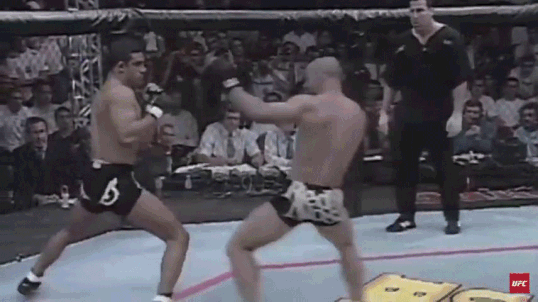I couldn't find much on the description of a round blow and what I found didn't sound the same as the long fist techniques. I found the description below and it didn't sound like what I've been doing or the new stuff I've seen in MMA. The first sentence below isn't how a long fist technique is powered. I don't pull my hand back and then send it forward. This would mean that I
1. Pull my hand back then send it forward.
2. When I throw my long fist techniques, my fist are going in the same direction like a wheel.
"
When about to deliver a round blow it is impossible to do so without first drawing the hand back. This gives notice of your intention to hit, and prepares your opponent for what is coming. As most of Welsh's blows were of the circular variety, McFarland always heeded the notice of Welsh's intention, with the result that most of his blows went very wide of their mark--so wide, indeed, that Welsh looked almost foolish, and the faults and weaknesses of his style--the American style--were clearly shown. McFarland kept on piling up points, and I fully expected to see Welsh suddenly flash into brilliant and bewildering attack, but it never came, and he looked a loser round after round, and never seemed to me to equal his opponent in either speed or skill. McFarland was far more precise in his hitting than Welsh was, and he varied his attack very nicely; he judges his distances well, and his footwork was really splendid. His ducking and slipping reminded me of Pedlar Palmer in his best days, and, taken altogether, he was much the superior boxer, in style, execution, speed, footwork, judgment and precision of hitting. There was not a stage of the contest when McFarland could not have been declared the winner. He won from beginning to end, and I tender him my sincere sympathy at being deprived of the victory he had so fairly earned." source:
Old timers' technique/style descriptions
I found another source that described it as a "primitive hook" "
Three years earlier, Dempsey had knocked the Canadian out in the 13th Round. In the 32nd round of this bare-knuckle affair, Lablanche threw a “round blow,” essentially a primitive hook." Source
JL: The Pivot Punch
This one is from a .pdf book online source:
http://www.nycsteampunk.com/bartitsu/manuals/TheArtAndPracticeOfBoxing1825.pdf
"
The parts of the body and face, which are subject to suffer by round blows,are the temporal arteries, the jaw-bone, the glands of the ears,the ribs, and the loins; those subject to straight ones, the eyes,the mouth, and the pit of the stomach"
Long fists hits similar locations except the ribs and loins. For example, The long fist techniques that I'm seeing would not be effective against the ribs because of the big circular path.
I even went to look at some of my sparring videos to see if I was pulling my hand back. For the long fist punches that I'm referring to, You either rotate your arm forward or backwards. Never back then forward, to do so will greatly cut down the speed and power. It's also not a punch that you can just stop and then send it in the opposite direction. If I were to throw a back hand or hammer fist off the punch that I'm referring to, then I would easily tear up my shoulder. Below is an example. of how my arm rotates in one direction.
This wasn't a hard nor fast punch. The punch grazed him because he's sneaky fighter and stepped on my foot which prevented me from moving forward. It looks like I'm pulling my arm back, but I'm just circling my arm forward. Notice how it drops down to my knee and then circles back up. The bigger long fist punches follow a similar path. I may start from the back, but I don't pull back, then go forward.






